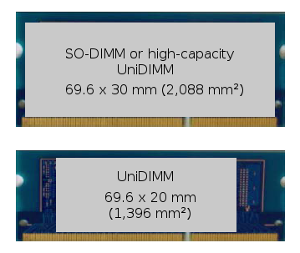 W
WIn the computer industry, vaporware is a product, typically computer hardware or software, that is announced to the general public but is late or never actually manufactured nor officially cancelled. Use of the word has broadened to include products such as automobiles.
 W
WAirPower is an unreleased wireless charging mat developed by Apple Inc. It was designed to charge up to three devices simultaneously, supporting two Qi devices, such as an iPhone and AirPods, and an Apple Watch. It was announced on September 12, 2017. Originally planned to be released in early 2018, AirPower failed to materialize, leading to wide speculation over the product's future, until Apple announced on March 29, 2019 it had canceled the release.
 W
WThe Amiga Walker, sometimes incorrectly known as the Mind Walker, is a prototype of an Amiga computer developed and shown by Amiga Technologies in late 1995/early 1996. Walker was planned as a replacement for the A1200 with a faster CPU, better expansion capabilities, and a built-in CD-ROM. The Walker was never released; Escom and Amiga Technologies went bankrupt, and only two prototypes were made.
 W
WThe Atari Mindlink is an unreleased video game controller for the Atari 2600, originally intended for release in 1984. The Mindlink was unique in that its headband form factor controls the game by reading the myoneural signal voltage from the player's forehead. The player's forehead movements are read by infrared sensors and transferred as movement in the game.
 W
WThe Audience Engine is announced open-source, customizable suite of fundraising tools for public radio being developed by the Congera Corporation, a subsidiary of WFMU Radio. It was conceived by and is being developed under the supervision of WFMU management, but as of November 2020 no product has been announced, demoed or released thus rendering the project as effectively vaporware.
 W
WCherryOS was a PowerPC G4 processor emulator for x86 Microsoft Windows platforms, which allowed various Apple Inc. programs to be operated on Windows XP. Announced and made available for pre-orders on October 12, 2004, it was developed by Maui X-Stream (MXS), a startup company based in Lahaina, Hawaii and a subsidiary of Paradise Television. The program encountered a number of launch difficulties its first year, including a poorly-reviewed soft launch in October 2004, wherein Wired Magazine argued that CherryOS used code grafted directly from PearPC, an older open-source emulator. Lead developer Arben Kryeziu subsequently stated that PearPC had provided the inspiration for CherryOS, but "not the work, not the architecture. With their architecture I'd never get the speed."
 W
WFluorescent Multilayer Disc (FMD) is an optical disc format developed by Constellation 3D that uses fluorescent, rather than reflective materials to store data. Reflective disc formats have a practical limitation of about two layers, primarily due to interference, scatter, and inter-layer cross talk. However, the use of fluorescence allowed FMDs to operate according to the principles of 3D optical data storage and have up to 100 data layers. These extra layers potentially allowed FMDs to have capacities of up to a terabyte, while maintaining the same physical size of traditional optical discs.
 W
WThe Holographic Versatile Card (HVC) is a data storage format by Optware; the projected date for a Japanese launch had been the first half of 2007, pending finalization of the specification, however as of July 2010, nothing has yet surfaced. One of its main advantages compared with discs is the lack of moving parts when played. They claim it will hold 30GB of data, have a write speed 3 times faster than Blu-ray, and be approximately the size of a credit card. Optware claims that at release the media will cost about ¥100 each, reader devices are set to cost about ¥200,000(roughly $2400) while reader/writer devices are to cost ¥1 000,000 each.
 W
WThe Holographic Versatile Disc (HVD) is an optical disc technology developed between April 2004 and mid-2008 that can store up to several terabytes of data on an optical disc 10 cm or 12 cm in diameter. The company responsible for HVD went bankrupt in 2010, and the product was not launched.
 W
WThe Hyper CD-ROM is an optical data storage device similar to the CD-ROM with a multilayer 3D structure, invented by Romanian scientist Dr. Eugen Pavel.
 W
WThe Samsung Ativ Q was a 13.3-inch convertible laptop to be manufactured by Samsung. Unveiled at a Samsung Premiere event on June 20, 2013, the tablet was to run Windows 8, but also shipped with software that also allowed it to run the Android operating system. The Ativ Q's hardware was also distinguished by multiple folding states and a high resolution display.
 W
WThe Stacked Volumetric Optical Disc is an optical disc format developed by Hitachi/Maxell, which uses an array of wafer-thin optical discs to allow data storage.
 W
WUniDIMM is a specification for dual in-line memory modules (DIMMs), which are printed circuit boards (PCBs) designed to carry dynamic random-access memory (DRAM) chips. UniDIMMs can be populated with either DDR3 or DDR4 chips, with no support for any additional memory control logic; as a result, the computer's memory controller must support both DDR3 and DDR4 memory standards. The UniDIMM specification was created by Intel for its Skylake microarchitecture, whose integrated memory controller (IMC) supports both DDR3 and DDR4 memory technologies.